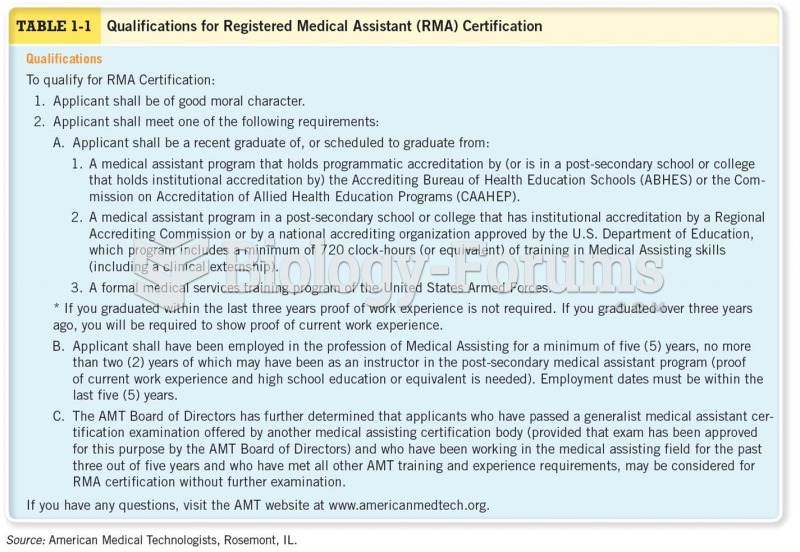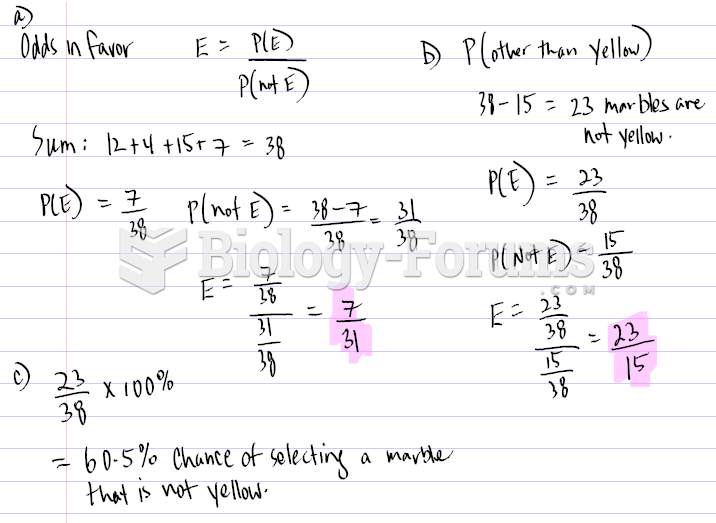Answer to Question 1
d
Answer to Question 2
Obesity is defined as having a body mass index (BMI) greater than 30that standard has been lowered since 1997, at which time obesity was a BMI greater than 32.3 for women and 31.1 for men. Current BMI standards for being overweight are between 25.0-29.9 . Currently two-thirds of American adults and 16 percent of children and adolescents are either overweight or obese. By 2015, it is projected that 75 percent of adults and 24 percent of children and adolescents will be overweight or obese, with the rates being even higher for non-Hispanic blacks, women, Mexican Americans, and Native Americans. Obesity is second only to tobacco use in terms of being a preventable cause of diseases and death. It increases the risk of many diseases, including coronary heart disease, Type 2 diabetes, and stroke, resulting in annual health care costs of up to 100 billion dollars a year and a reduction of life expectancy from between five to twenty years.
As with most other medical/psychological problems, obesity results from interactions among biological/genetic, psychological, social, and sociocultural influences. According to the thrifty genotype hypothesis, humans inherited genes that helped our ancestors survive famines by storing fat; however, those genes may now be dysfunctional because high-fat foods are plentiful in today's world. Genetic variations among the obese include brain structures (e.g., the hypothalamus) and hormones (e.g., leptin) that influence eating behaviors by regulating food consumption and appetite. A primary focus of scientists is the neurotransmitter dopamine because it affects food palatability.
Psychologically, obesity is related to negative mood states and poor self-esteem, which may be responses to the pervasive and often unrelenting harassment, teasing, and discrimination in school, work, and hiring practices experienced by the obese. Many family environment factors are also associated with overweight and obese children and adolescents, including teasing, parental eating patterns and attitudes about food, and mealtime atmosphere. Attitudes about obesity are also influenced by friends and social networks as well as by a person's community and social class (which may affect availability of foods such as fresh fruits and vegetables). Although advertising high-calorie foods is seen by some as a contributor to the problem, banning such ads doesn't seem to halt the increase in obesity rates.
Treatments include dieting, lifestyle changes, medications, and in extreme cases, gastric bypass surgery. Unless lifestyle changes are made to change diet and to include exercise, periodic (yo-yo) dieting is not effective and actually increases the risk of cardiovascular disease, stroke, and altered immune functioning. Comprehensive interventions that combine lifestyle changes with drugs and/or surgery appear to be the most effective in sustaining weight loss.







